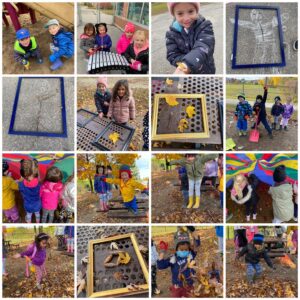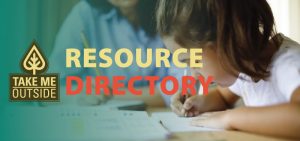 Image from Mrs. Brown-Lloyd in Ontario
Image from Mrs. Brown-Lloyd in Ontario
#TMO4LearningChallenge: Activity Ideas from April!
New Season, New Resources🌱
This is a portion of what we send to those participating in the #TMO4LearningChallenge each month! In this post, we’re passing on some of the ideas we share with our 4500+ Learning Challenge participants each month to support their commitment of weekly outdoor learning. For those who are not a part of this challenge, you can still have access to these outdoor learning ideas through our blog posts! We hope they also equip you with inspiration for your time outside. If you try one of these ideas we would love to hear how it went! Please email us (info@takemeoutside.ca) or tag us on Instagram (@take.me.outside) or Twitter (@takemeoutside)!
Spring Activities

Image from Janelle Danyluk in B.C.
This month we are highlighting some incredible bird-themed learning connections from our friends at Learning for a Sustainable Future! Be sure to check out their Step Outside Nature Guides to learn more about seasonal happenings along with resources and activities all year long!

Nesting creatures, and building a home for birds!
It’s time for our feathered friends to nest. The below activity ideas explore nesting habits of birds as well as the unique elements of some nests. All of these activities use hands-on and inquiry based models for learning!
- Read Birds by Kevin Henkes. Complete the Verb Bird poem and art activity.
- Spring is nesting time for birds of all kinds. Go on a nest quest to see what nests you can find.
- Participate in a bird-watching walk, identify the different bird behaviours.
- Birds converse with each other throughout the day to share messages! This Table Talk activity challenges students to communicate with another student using bird sounds.
- Listen to Bird Builds a Nest, then get outside and look for twigs, rocks, any material you can pick up easily and build a bird’s nest.
- Try to build a bird nest with artificial materials instead of natural materials. How do your two nests compare?

School nest watch programs & more
Study bird behavior’s through building nesting boxes for local birds at your learning location. Once you have built the boxes here are some activity ideas to extend the learning:
- In spring, many birds are on the lookout for materials to build their nests. Learn how you can offer birds nesting materials. Take it one step further by growing bird-nesting material in your schoolyard.
- Participate in a bird-focused citizen science program to learn more about birds in your area and contribute observations for science and conservation. Use the Merlin app to help you identify your bird sightings.
- Learn how to identify bird sounds and calls, then get outside and test your bird skills.
- Play the Climate Challenge game (birdday.org) where students assume the role of a bird and then figure out how climate change is affecting their lives in their food, habitat and migration.
- Investigate a human-related threat to birds and present information in a creative communication such as an infographic, news article, skit, memes, comic or game.
Ziinzibaakwadgummig – The Sugar Bush
(Anishinaabemowin)

“This series of five videos shares how the Anishinaabeg learned about the sap of the maple tree and how to create sweet water, maple syrup. They are part of five lesson plans in math, science, and Indigenous ways of knowing and being. The five videos are:
- The Stories (11:41 minutes)
- Collecting Maple Sap (12:48 minutes)
- Language (7:44 minutes)
- Ininiaatig – Maple Trees (11:21 minutes)
- Ziinzibaakwad – Maple Sugar (14:25 minutes)”
Outdoor Learning Resources

The Outdoor Learning Resource Hub:
A comprehensive guide to outdoor learning resources in Canada
Have you checked out our new guide yet? The
Outdoor Learning Resource Hub is a living document that highlights outdoor learning organizations throughout the country. Regardless of your experience or expertise in outdoor learning, you can explore this directory to learn more about what each of these featured organizations are up to, and how they contribute to extending learning beyond the four walls of a classroom. If you are part of an organization that would like to be featured, please get in touch:
info@takemeoutside.ca. Feel free to share, download, and spread the word broadly!
|

Canadian Wildlife Federation
The City Nature Challenge is an annual event that encourages people around the world to document and explore the nature in their urban environment. Participants can use the iNaturalist app to take pictures of plants, animals, and fungi, and contribute to a global database of biodiversity.
Resource can be found in full HERE! |

Caterpillars Count!
University of North Carolina
Caterpillars Count! is a citizen science project for measuring the seasonal variation, also known as phenology, and abundance of arthropods like caterpillars, beetles, and spiders found on the foliage of trees and shrubs.
Resource can be found in full HERE!
|
LOOKING FOR MORE WAYS TO ENGAGE WITH OUTDOOR LEARNING?













